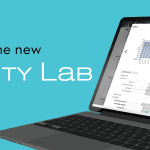Mobility Lab Receives Top Marks in Study of 73 Tools to Assess Parkinson’s
Using technology-based devices to assess health conditions has become increasingly popular in the last decade. These technologies provide unbiased and objective measurement that can be used in clinical practice and scientific research. The ubiquitous nature of technology in the home as well as the increase in computer and technology literacy of the general population has shed light on this field. The possibility of technology-based devices to simplify patient participation and their ability to detect subtle changes also makes these devices an attractive option. Many studies have explored the use of these devices to investigate clinical manifestations of Parkinson’s. However, clinimetric properties and clinical validation can vary greatly among each device, and a recent study has sought to identify the best tools.
“A Systematic Review of the Characteristics and Validity of Monitoring Technologies to Assess Parkinson’s Disease” covers wearable, non-wearable, and hybrid devices to measure motor function in individuals with Parkinson’s disease. For each device, the team reviewed the availability, use, reliability, validity, and sensitivity to change in all devices, and then placed them in different categories. These categories included “Recommended,” “Suggested,” or “Listed” based on the following criteria:
- Use in the assessment of Parkinson’s disease
- Use in published studies by people other than the developers
- Success in clinimetric testing
73 devices were assessed in total. Of the 73, 22 were wearable devices, 38 were non-wearable devices, and 13 were hybrid devices. 9 devices were considered “Recommended,” 34 were “Suggested,” and 30 were classified as “Listed.”
Receiving top marks among the recommended devices was APDM’s Mobility Lab system. The team remarked on the over 16 hour battery charge, the registration of different outcomes like postural sway (like velocity, frequency, and distance), lower limb gait (like cadence, stride length, velocity, and stride time), postural transitions (like number of steps, duration, and step time), and upper limb gait and trunk (like trunk range of motion) measures. Also prized were the Mobility Lab’s standard integrated tests such as Sway and TUG. The team also reviewed several studies recommending Mobility Lab for different uses, including studies showing the following:
- Sensitivity to detecting untreated PD
- Sensitivity to detecting progression of PD
- Sensitivity to detecting response to symptomatic treatments of PD
- Test-retest reliability and sensitivity, comparing clinical tests with sway from Opal sensors
- Correlation to UPDRS scores
Mobility Lab can provide objective outcome measures for assessing Parkinson’s in addition to many other applications. To find out more about Mobility Lab, click here.





